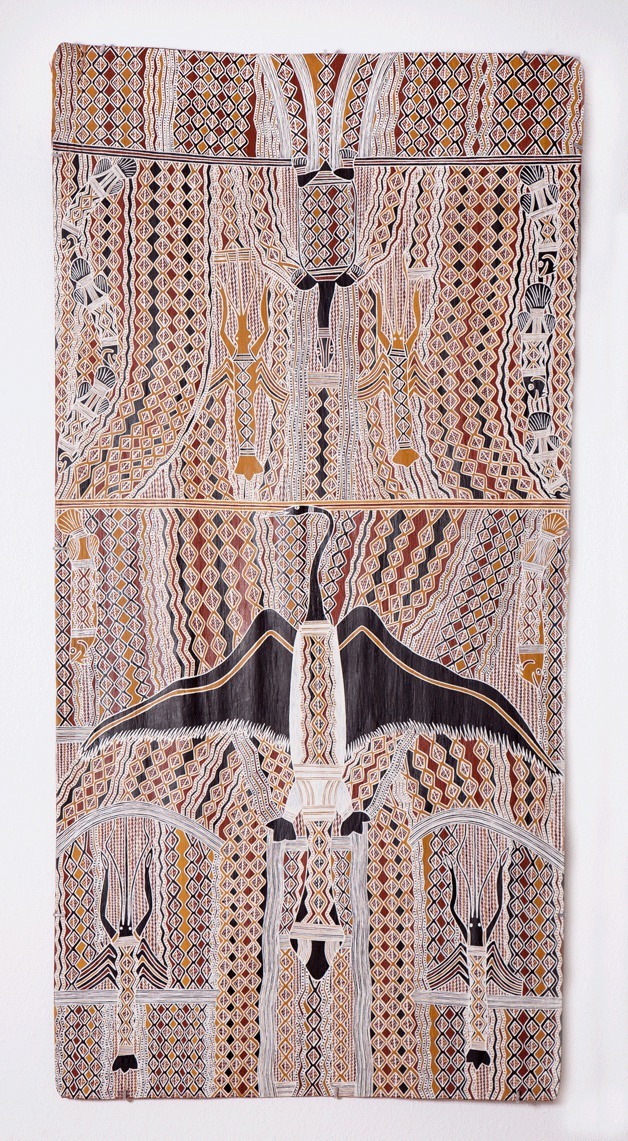Roby King Galleries presents “Barrku! Treasures from a Distant Land” through June 30.
The gallery says “Barrku” has two meanings: far away and something of excellence.
Fitting, because the show is a first-ever exhibit of art on bark from this remote art center in the tiny township of Yirrkala in Northeast Arnhem Land in Australia.
The bark art is made by pealing the stringy tree bark of the Eucalyptus, heating it in a fire, then weighing it down with rocks to flatten before painting. Naturally hollowed-out by termites, the Eucalyptus tree truck is transformed into a ceremonial pole.
Arnhem Land has been occupied by indigenous people for tens of thousands of years and is where archaeologists discovered the oldest known stone ax believed to be 35,500 years old.
“These are the oldest continual artistic traditions on earth,” said Julie Harvey of Harvey Art Projects.
Harvey studied at the Adelaide School of Fine Art, and specialized in Australian Aboriginal traditions.
For centuries the indigenous Yolngu people of Northwest Arnhem Land have connected with ancestral beings through song, dance and painting. Today, making art has become a matter of cultural survival, she explained.
“An artist inherits rights to a story when they are initiated. There are several layers of initiation, each with more knowledge and more information,” she said.
The art of the Yirrkala region was amongst the earliest commercial Aboriginal art marketed by missionaries as early as 1935. Some think that art from this region, in the mid-1950s, was a catalyst for the non-Aboriginal art world’s realization that indigenous art is a unique and profound art tradition.
The show is a collaborative exhibit with Harvey Art Projects of Ketchum, Idaho in conjunction with the Seattle Art Museum’s three-month exhibit, “Ancestral Modern: Aboriginal Art,” from the Kaplan and Levi Collection.
Roby King Galleries is at 176 Winslow Way East.



